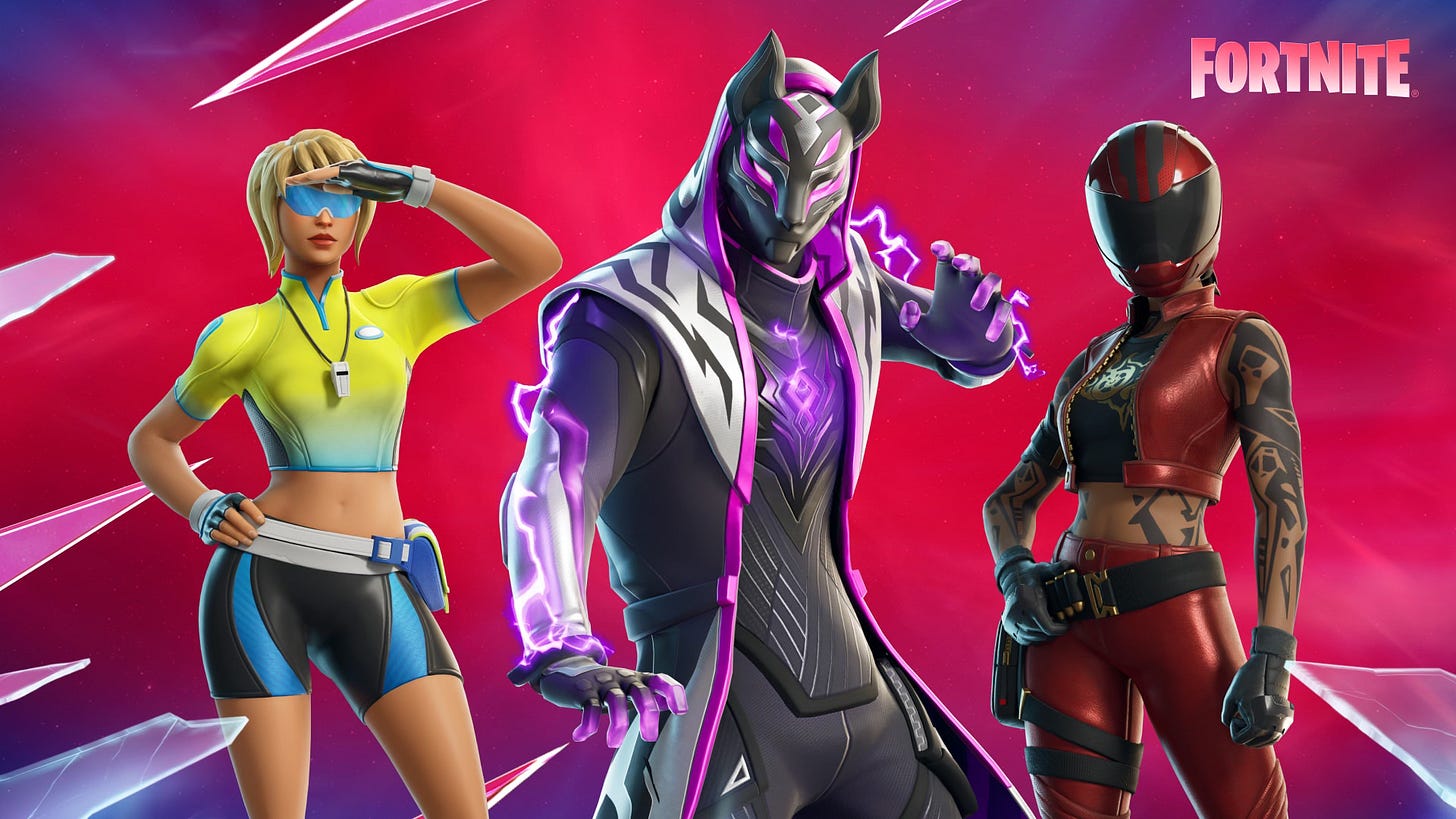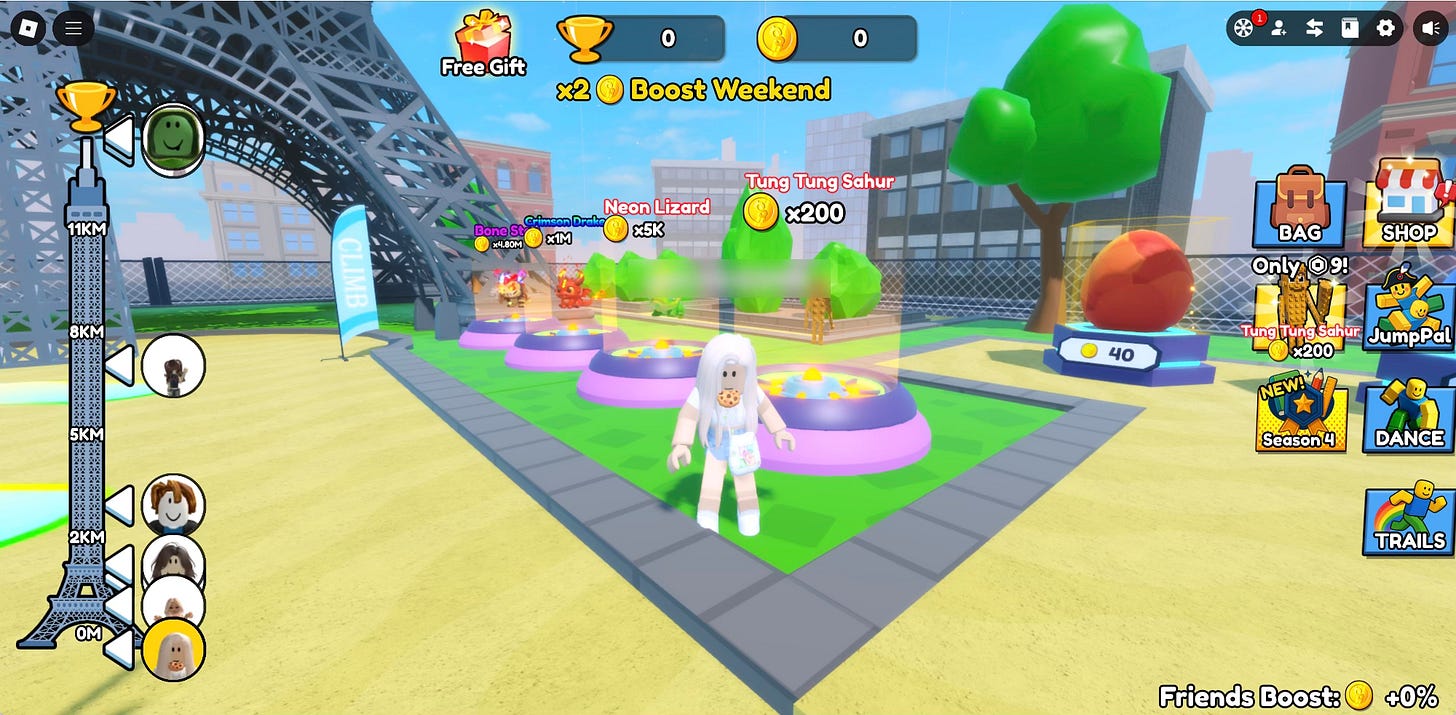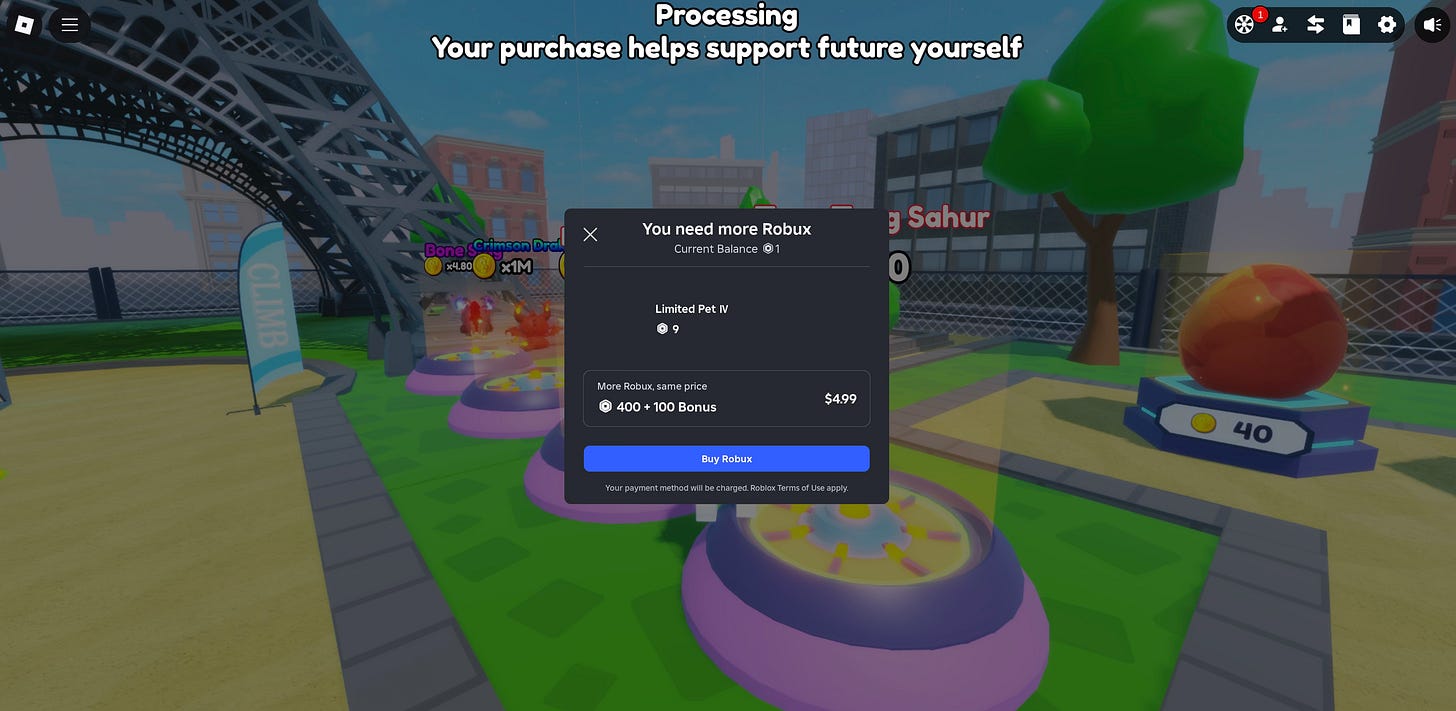Fortnite Is About to Become More Like Roblox. Is That a Good Thing?
Just recently, Epic Games showed concern about the amount of in-game item slop that's in Roblox. Now, they're bringing in-game item sales to Fortnite.
Recently, developer Epic Games announced that later this year, Fortnite “island” creators can start selling in-game digital items to players. Per a press release:
“In December, developers will be able to sell items directly from their Fortnite islands, opening up new revenue potential, in addition to receiving engagement payouts from Fortnite item shop sales.”
My professional response to this decision can be summed up simply: Boooooooooo!
One of the reasons we have a “no robux” policy in our house is because of the typically obnoxious and annoying way Roblox experiences blast players with superfluous items to spend money on. It’s easier to have a blanket “no” policy with rare exceptions, like letting my kids get a Labubu costume that can be used anywhere.
If you’re not familiar with what this looks like in Roblox, lemme give you an example:
This is how most Roblox games look. You’re immediately asked to fork over money. Which isn’t to say you need to spend money. My kids have spent many hours in Roblox and never buy them. They’re cheat codes, or ways of accessing items early. But it often reveals the heart of many Roblox experiences: vehicles to drain money from kids.
In terms of monetization, Roblox games veer closer to mobile games than anything else. The design feels built around annoying the player, hoping they’ll find a dollar.
Truth be told, I was surprised to learn Fortnite didn’t have something similar. Neither of my kids have expressed interest in Fortnite (yet), so I haven’t spent much time within its Roblox-like worlds. (In Fortnite, they’re called “islands” but function similarly. They’re games within Fortnite because Fortnite is a platform, not just a game.)
But another reason I was surprised was because the same observations I’ve made about the in-game item slopification of Roblox were also made by the person who runs Fortnite, outspoken Epic Games CEO Tim Sweeney. In an interview with The Game Business from June (!), he said they were leaving money on the table for a good reason:
“Fortnite is for players, first and foremost. Players love the ability to buy outfits and then use them everywhere they go. They love the fact that Fortnite is a game where everybody has an equal chance. There’s no pay-to-win. And there is no scenario in which spending a lot of money gives you a benefit over players who haven’t spent money.
“If you look at how Roblox monetization worked, when you’re spending money in an experience, you’re mostly buying items that only work there. You go play another mode or into another Roblox experience, and it doesn’t work. That’s something we are worried about as a concept. If that becomes the way gaming works, there’s going to be a lot of poor deals offered to customers.
The idea that somebody built a better game, and now I’m going to go to that game and have to buy everything again… That’s not what players want. And then you get into pay to win mechanics. You get into scenarios where there’s loot boxes or things that resemble loot boxes, and you are paying for a chance at something rather than buying some specific identifiable thing. Generally, we’ve rejected those forms of monetization for our own games. And we really think that we can build an economy that’s better for players and that rewards creators more as a result of the increased player trust, and avoid falling into the pitfalls of the pay to win and the loot box mechanic games.”
Sweeney is absolutely right!
Fortnite is, at its core, a well-made game. But part of its secret sauce is that the monetization of Fortnite is pretty good. You don’t feel like you’re getting ripped off.
Roblox favors maximalist monetization over the best experience. What ends up happening is a lot like playing a mobile game flooded with ads, and soon you become good at navigating and ignoring the slop. You become immune to it. You look past it.
But when you see it, my god, it’s gross. My kids don’t blink at what’s being pitched at them in Roblox because they know they can’t have it. Good for them, I guess, and bravo on my parenting job, I suppose, but it’d be nice if that stuff was better or gone.
(imo, Roblox should block in-game item sales to children under a certain age)
In the conversation with Sweeney, The Game Business pointed out “one of the chief complaints we’ve heard from developers building games in Fortnite, is around how they make money.” Letting folks sell in-game items would turn on a money firehose.
How to reconcile the comments from Sweeney with Fortnite’s decision, though?
Well, I asked and got an answer.
“Epic has long played two distinct roles in the game business: as a maker of games, and as a builder of tools and platform technology serving other developers,” said Sweeney in a statement to Crossplay. “When we make games, Epic makes decisions as a game maker. In Unreal Engine and Epic Games Store, Epic made decisions as a provider of services to other developers. As Fortnite and Roblox have both grown as ecosystems serving developers, we very recently came to the realization that the part of Fortnite that hosts content made by independent developers should support their independent creative and commercial decisions, whether they are similar to ours or different. So we’ve changed our policies accordingly.”
That statement seems to roughly translate to: “We’re feeling pressure from Roblox.”
(A small thing, but it’s interesting and notable that Sweeney mentions Roblox by name both in interviews and this prepared statement to a journalist. Most companies like to pretend their competition doesn’t exist, let alone validate their existence by name!)
Sweeney told me that “full rules are coming in November,” ahead of the December launch. It makes me wonder if Epic will put their thumb on the scale during this initial rollout, allowing in-game items to arrive in Fortnite and drive creator revenue but without the sheer wild west attitude that dominates their distribution in Roblox.
We’ll see!
Fortnite and Roblox have competing and overlapping audiences. The future of both platforms are tied to the success of their creator ecosystems. If developers are making more money on Roblox, they’re going to build on Roblox. That’s how we get here.
And yet, reading through Sweeney’s comments about Roblox and Fortnite was refreshing because it felt like an actual human person working through a challenging and nuanced problem about running an ecosystem to find an appropriate balance, rather than simply doing whatever is going to make the money number go up.
It makes sense that Fortnite is finally allowing in-game items. But here’s hoping they do it better than Roblox.
Have a story idea? Want to share a tip? Got a funny parenting story? Drop Patrick an email.
Also:
My nine-year-old has asked about Fortnite a few times, but we’ve never played together. KPop Demon Hunters coming to Fornite might get us to actually try it.
Not a huge Fortnite person myself. We did an experiment years ago at Waypoint where we played a bunch of it for an entire month. I definitely got the appeal!
We did download the LEGO/Fortnite collaboration, but I can’t remember why we didn’t end up playing it. Not for any good reason. We just forgot, I think.







Hmm, can't say I'm very pleased to hear this.
My kid is a big Fortnite player and has spent a fair amount of money (pocket money, gifts or earned through chores etc.) on the battle pass and other in game items. At first I was pretty reluctant to let him do this because it seems like a waste of money to spend it on an ephemeral item that is only 'owned' as long as he keeps playing the game. But I recognise he could easily say the same to me about paying to stream music or even buying a pint of beer at the pub. Still, I don't want him to spend even more money on it.
I also play Fortnite and I was surprised how much I enjoy it - I hadn't done any online multiplayer gaming for years. I don't spend any money at all on it and it is possible to acquire some items just by playing. I never play the creative maps. My kid does though, they seem a lot more trashy and geared towards young kids than the main experience. The only good thing about them is that usually you can quit any time - therefore causing less problems like 'I'm in the middle of a match' when we're trying to leave the house or eat a meal.
Its interesting you got a response actually from Sweeney and not just Epic PR.
I don't think we need more things like roblox in the world though.